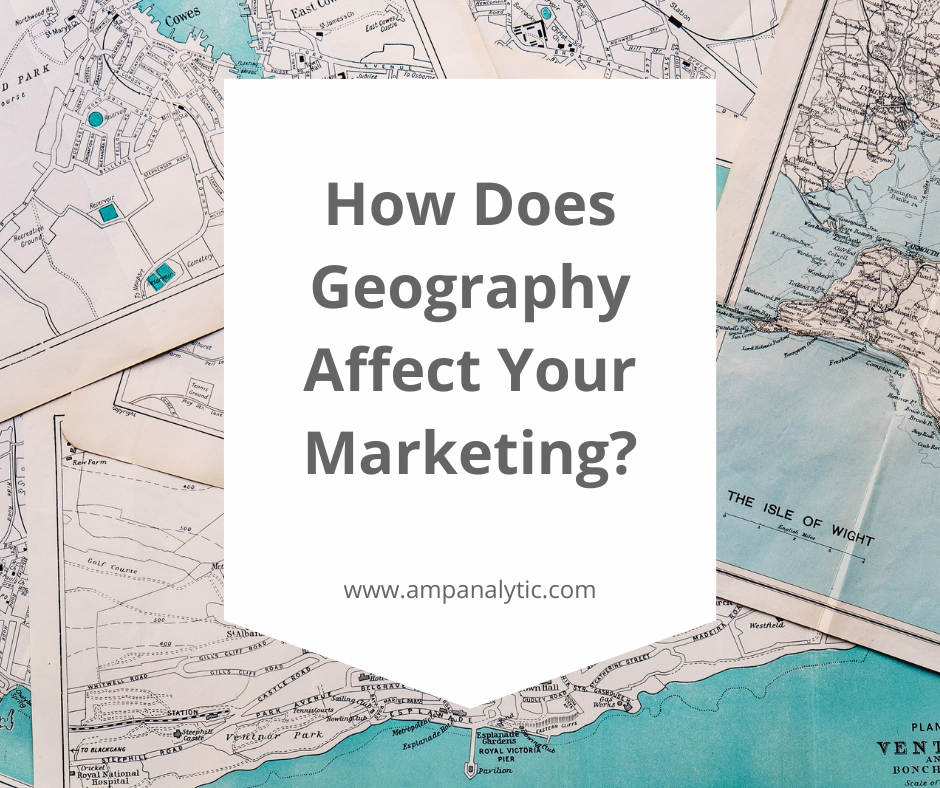
Marketing campaign results are affected by many different factors from audience demographics to advertisement design, call to actions, and even geography. Whether its unique geographic features, demographic factors, economic differences, or seasonal influences, geography plays a key role in understanding your market and how best to reach the consumers within your territory. By studying geographic data, you can optimize your campaigns and avoid marketing waste.
Geographic Features
Some geographic features can impact the size and shape of your market. If you have mountains, rivers, large bodies of water, or national parks nearby, these elements often prevent customers from coming to your location.
For example, let’s say you pull a list of addresses within a 10-mile radius of your store, but there’s a mountain in the middle of that radius. The people on the store’s side of the mountain might have a 5–15-minute drive, but those on the other side might have a 45-minute drive. Technically, they are still within your 10-mile radius, but the drive time is a deterrent.
When you identify geographical barriers and understand how they impact your customers, you can adjust your marketing territory. Making these changes will help you reduce marketing waste and increase your response rates because you are targeting the households most likely to stop by your store location.
Demographic Factors
Studying your market’s geography can reveal demographic factors impacting your business. Are you in a college town that’s filled with activity and traffic during the school year and quiet during the summer? Are you in an area with multiple retirement communities? Perhaps you have a location in a tourist town. When are the busy seasons? Is there a high percentage of business commuters who stay during the week and leave on the weekend? Knowing the demographic makeup of your territory helps you know how to reach and meet the unique needs and wants of your consumers.
Economic Differences
If you have urban locations, your territory might be smaller and pulling in consumers from a tighter radius. If you are in a rural area, you may need to increase your marketing area in order to account for homes with larger plots of land.
Locations on affluent streets can be surrounded by homes with lower household incomes than your typical customers. If that’s the case, you may need to advertise beyond your immediate territory. Keep in mind the cost of living will change from one area to another, so factor in those economic differences when selecting your marketing list.
Seasonal Influences
Seasonal changes often influence different markets and what consumers want. Some areas have longer winters, others longer summers, and some have little to no seasonal changes at all. Consumers might have unique needs for tornado, hurricane, or rainy seasons. Don’t forget to take into consideration any festivals or special celebrations hosted within your territory.
Knowing the seasonal needs and changes will help you provide the best goods and services for your consumers in that area. Create marketing campaigns that speak to their needs and offer valuable solutions to your customers and prospects.
Geography influences your marketing territory. Each location will have its own challenges and opportunities to shine, but first you need to identify and recognize how geography is impacting your locations.
Once you understand this information, then you can tailor your products and offers for the local consumers. You can also see what your market penetration is and how much potential you have for growth in that area.
If you are interested in a geographical study of your store locations, reach out to our team. We offer custom solutions and can analyze each location individually.
